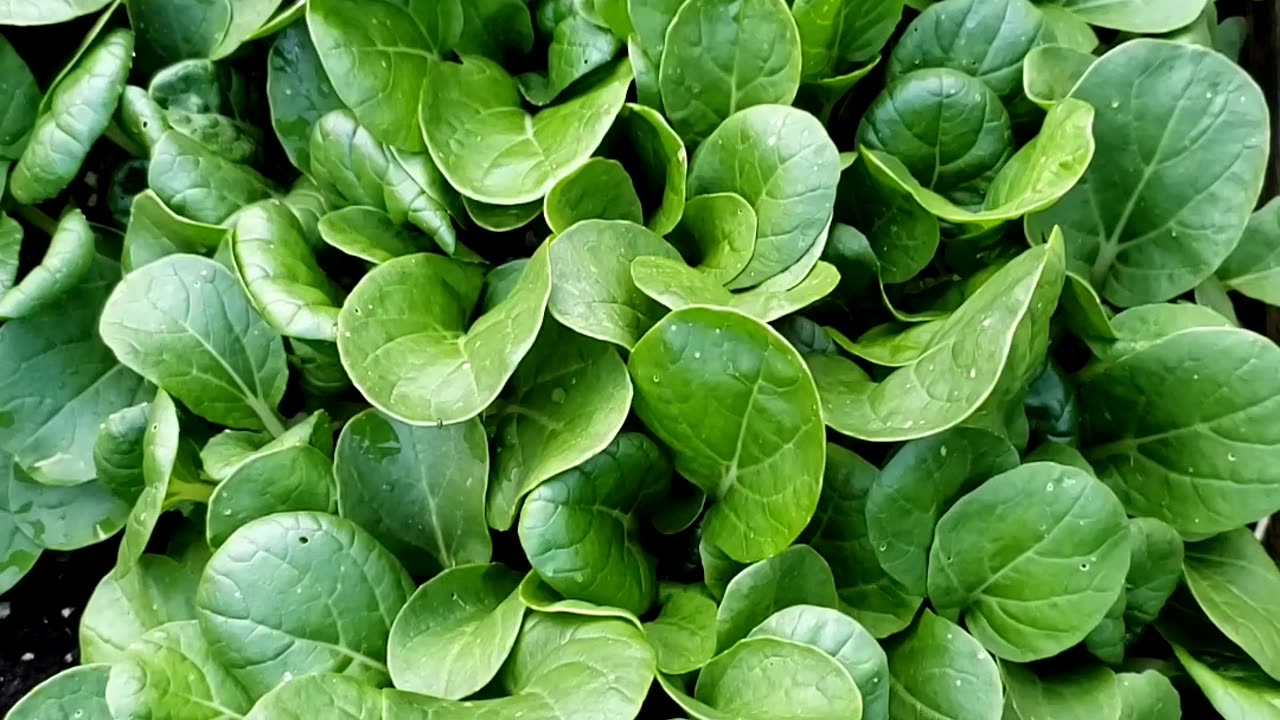Premium Only Content

Harvesting first Crops, Bok Choy
Bok Choy Gardening Tips
Home garden produce, bok choy
Bok choy, also known as Chinese cabbage or pak choi, is a nutritious leafy green vegetable that is commonly used in Asian cuisine. It belongs to the brassica family, which includes other vegetables like cabbage, broccoli, and kale. Bok choy has crisp, white stems and dark green leaves, both of which are edible and delicious.
If you're interested in growing bok choy in your home garden, here are some tips to help you get started:
Climate and sunlight: Bok choy prefers cool weather and grows best in temperatures between 50°F and 75°F (10°C to 24°C). It can tolerate some shade but thrives in full sun. Ensure your garden receives at least 4-6 hours of direct sunlight each day.
Soil requirements: Bok choy grows well in fertile, well-draining soil. Prepare your garden bed by incorporating organic matter like compost or aged manure to improve the soil's nutrient content and drainage. Aim for a slightly acidic to neutral pH level, around 6.0 to 7.5.
Planting: Bok choy can be started from seeds or transplants. If starting from seeds, sow them directly into the ground or containers about ¼ to ½ inch deep, and keep the soil consistently moist until germination. If using transplants, space them 6 to 8 inches apart in rows, leaving about 12 to 18 inches between rows.
Watering: Bok choy requires regular watering to keep the soil evenly moist. Avoid overwatering, as it can lead to root rot. Mulching around the plants can help retain moisture in the soil and reduce weed growth.
Fertilization: Prior to planting, incorporate a balanced organic fertilizer or compost into the soil. Additionally, you can apply a side dressing of nitrogen-rich fertilizer about three weeks after transplanting or when the seedlings are well established.
Maintenance: Keep an eye out for pests like aphids, flea beetles, and cabbage worms, which can damage the leaves. Use organic pest control methods such as handpicking, neem oil, or insecticidal soap to manage infestations. Weeds should also be regularly removed to prevent competition for nutrients and space.
Harvesting: Bok choy is typically ready for harvest within 45 to 60 days from planting, depending on the variety. Harvest the entire plant when it reaches a desirable size. You can cut the leaves at the base or pull out the whole plant, depending on your preference.
Remember to rotate your crops each season to prevent the buildup of pests and diseases. Bok choy can be enjoyed in various dishes, from stir-fries and soups to salads and side dishes.
Bok Choy Gardening Tips
User
Home garden produce, bok choy
ChatGPT
Bok choy, also known as Chinese cabbage or pak choi, is a nutritious leafy green vegetable that is commonly used in Asian cuisine. It belongs to the brassica family, which includes other vegetables like cabbage, broccoli, and kale. Bok choy has crisp, white stems and dark green leaves, both of which are edible and delicious.
If you're interested in growing bok choy in your home garden, here are some tips to help you get started:
Climate and sunlight: Bok choy prefers cool weather and grows best in temperatures between 50°F and 75°F (10°C to 24°C). It can tolerate some shade but thrives in full sun. Ensure your garden receives at least 4-6 hours of direct sunlight each day.
Soil requirements: Bok choy grows well in fertile, well-draining soil. Prepare your garden bed by incorporating organic matter like compost or aged manure to improve the soil's nutrient content and drainage. Aim for a slightly acidic to neutral pH level, around 6.0 to 7.5.
Planting: Bok choy can be started from seeds or transplants. If starting from seeds, sow them directly into the ground or containers about ¼ to ½ inch deep, and keep the soil consistently moist until germination. If using transplants, space them 6 to 8 inches apart in rows, leaving about 12 to 18 inches between rows.
Watering: Bok choy requires regular watering to keep the soil evenly moist. Avoid overwatering, as it can lead to root rot. Mulching around the plants can help retain moisture in the soil and reduce weed growth.
Fertilization: Prior to planting, incorporate a balanced organic fertilizer or compost into the soil. Additionally, you can apply a side dressing of nitrogen-rich fertilizer about three weeks after transplanting or when the seedlings are well established.
Maintenance: Keep an eye out for pests like aphids, flea beetles, and cabbage worms, which can damage the leaves. Use organic pest control methods such as handpicking, neem oil, or insecticidal soap to manage infestations. Weeds should also be regularly removed to prevent competition for nutrients and space.
Harvesting: Bok choy is typically ready for harvest within 45 to 60 days from planting, depending on the variety. Harvest the entire plant when it reaches a desirable size. You can cut the leaves at the base or pull out the whole plant, depending on your preference.
Remember to rotate your crops each season to prevent the buildup of pests and diseases. Bok choy can be enjoyed in various dishes, from stir-fries and soups to salads and side dishes.
Thanks for watching! Have a wonderful day!
-
 38:28
38:28
Athlete & Artist Show
6 hours ago $5.66 earnedNHL 4 Nations Face Off High Stakes Betting
76.6K5 -
 1:55:41
1:55:41
I_Came_With_Fire_Podcast
12 hours agoAncient Egypt's Rise: Lost Tech, Cult of the Blue Lotus, & Secrets of a Fallen Empire
65K15 -
 49:24
49:24
Tactical Advisor
6 hours agoNew Holster & Home Defense Shotgun | Vault Room Live Stream 016
49.4K2 -
 4:44:39
4:44:39
SoundBoardLord
9 hours ago90's Cartoons, Chill Vibes, Good Conversations - SATURDAY MORNINGS WITH CASEY
60.7K3 -
 38:28
38:28
Anthony Pompliano
2 days ago $4.79 earnedPomp on BlackRock & Metaplanet Buying Bitcoin
74.9K -
 36:01
36:01
TimcastIRL
19 hours agoThe Green Room #82 - Timcast Discord & Building Culture in the Digital Space with Roma Nation
93.3K15 -
 1:00:59
1:00:59
IsaacButterfield
21 hours ago $2.64 earnedSHOCKING Nurses Rant About Killing Israelis | Kanye Bombshell | USAID Spending
34.9K24 -
 11:38
11:38
MrBigKid
1 day ago $1.19 earnedSIG 556 Classic SWAT: The Swiss-Inspired Rifle for 'Merica
24.8K2 -
 1:13:32
1:13:32
Tommy's Podcast
2 months agoMedia Decentralization | Sam Anthony (TPC #1,640)
19.4K1 -
 1:01:05
1:01:05
Trumpet Daily
1 day ago $5.76 earnedMEGA Will Backfire on MAGA - Trumpet Daily | Feb. 14, 2025
18K23